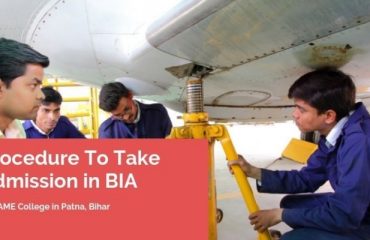Travel by air is considered to be the safest way of transportation.
However, some fatal aircraft crashes continue to occur in general aviation.
Have you ever tried to know what percentage of all aviation accidents can be attributed to human factors-related causes?
It’s maximum.
Yes! The maximum aircraft accidents do occur due to Human error in aviation. It’s one of the biggest safety barriers. It includes the mistakes of pilots, air traffic controllers, mechanics, maintenance crew members, etc.
An aviation accident may occur if any one of these individuals working in the aviation industry make a mistake or a bad decision.
Therefore, in terms of controlling such accidents, the individuals need to understand the key human factors in aviation maintenance.
Human factors play a crucial role for maintaining safety in the aviation sector.
What Are Human Factors In Aviation Maintenance?
When compared to other factors, human error is the leading cause of both general and commercial aircraft crashes.
The term ‘human factors in aviation’ is dedicated to better understanding how humans can most safely and efficiently be integrated with the technology.
This understanding is converted into design, training, policies or procedures that help human perform better.
However, there is not a simple answer to fix or change how people are affected by certain conditions.
Therefore, the study and application of human factors is very complicated.
However, there are basically 12 Human Factors in aviation maintenance.
The common causes of error in aviation maintenance are due to:
- Lack of communication
- lack of knowledge
- distraction
- lack of teamwork
- fatigue
- lack of resources
- pressure
- lack of assertiveness
- stress
- lack of awareness
- norms and
- Complacency
It’s extremely important to focus these factors in order to avoid the circumstances of future disasters.
Therefore, aviation maintenance human factors programs focus on the people who perform the work and address physical, physiological, psychological, and psychosocial factors.
Aviation Accidents Due To Human Factors Examples
General Aviation refers to smaller aircrafts related to private or commercial usage.
This category encompasses several kinds of civil aircrafts such as helicopters, gliders and even hot-air balloons.
To understand the statistic of aircraft accidents due to maintenance errors, let’s take a look at NTSB Report.
According to the National Transportation Safety Board (NTSB) Report 2015, general aviation accidents had been steadily declining for years, and associated fatalities had also declined.
The report tells: During the seven-year period from 2010 to 2016, not one U.S.-based commercial airline crash resulted in a fatality.
In 2017, there were two commercial airline crashes that resulted in fatalities.
However, such fatal crashes continue to occur in general aviation and the accident rate for non-scheduled air carrier flights (including chartered flights, along with air taxi and medical taxi flights) actually increased slightly in 2015 from previous years.
Despite Human errors, there are some other factors playing roles in some airline crashes. These factors include faulty equipment and unsafe weather conditions etc.
Boeing attributes 80 % of commercial airline crashes due to human error.
On the other hand, Aviation Safety magazine reports around 90 percent of crashes just due to pilot error.
These can be either the sole cause or a contributing factor of the accident, such as when a pilot makes a mistake when trying to navigate with faulty equipment or in bad weather.
Here is some more details on ‘Aviation Accidents Due To Human Factors Examples’
Pilot Error Statistics
Do you know what is ‘Pilot Error Myth’ and what do Pilot Error Statistics tell us about the cause of aviation accidents?
The term “pilot error” refers to such mistakes that pilots might make at any point during the operation of an aircraft.
It includes both tactical errors (mistakes in decision-making) and operational errors (mistakes that result from poor training).
A pilot has to perform many actions and make various decisions when operating an aircraft.
A single mistake of a pilot may result in an aviation crash. A 2009 Air France Flight from Rio to Paris is one of such examples.
Two more airline crashes occurred recently in Costa Rica involving a particular aviation company ‘Nature Air’.
Aircraft Accidents Due to Maintenance Errors
Human error is the key factor leading to aviation accidents. The pilot error statistics a part of the story behind what causes an aircraft crashes.
However, mechanical failures and maintenance errors may also cause to airline accidents.
Take an example of an accident occurred in in 2005 when an amphibious airplane operated by Chalk’s Ocean Airline was crashed into a shipping channel near the Port of Miami, Florida.
NTSB reported their findings (on the basis of crash investigators analysis) that the crash had been caused by the separation of the plane’s right wing during flight, and that this had occurred due to dual failures in the airline’s aircraft maintenance program as well as on the part of the Federal Aviation Administration (FAA), which should have identified and corrected the airline’s inadequate maintenance procedures.
Whatever the reasons behind the airline crashes, Human Factors in Aviation Maintenance Course is extremely important.
Note: If you are interested to join for an extensive aviation training, you can Join Bharat Institute of Aeronautics (BIA) Patna.
Bharat Institute of Aeronautics is an India’s Leading Aircraft Maintenance Engineering College offering ICAO [International Civil Aviation Organization] standard of Aircraft Maintenance Course.
Join it to pursue Aircraft Maintenance Engineering of world-class level.





